Compiled by Eepa
This is a growing list of books either by Indigenous Anarchists or about Indigenous resistance, history, theory, ecology, and futures.
The 500 Years of Resistance Comic Book
by Gord Hill (Author), Ward Churchill (Introduction)
A powerful and historically accurate graphic portrayal of Indigenous peoples’ resistance to the European colonization of the Americas, beginning with the Spanish invasion under Christopher Columbus and ending with the Six Nations land reclamation in Ontario in 2006. Gord Hill spent two years unearthing images and researching historical information to create The 500 Years of Resistance Comic Book, which presents the story of Aboriginal resistance in a far-reaching format.
Other events depicted include the 1680 Pueblo Revolt in New Mexico; the Inca insurgency in Peru from the 1500s to the 1780s; Pontiac and the 1763 Rebellion and Royal Proclamation; Geronimo and the 1860s Seminole Wars; Crazy Horse and the 1877 War on the Plains; the rise of the American Indian Movement in the 1960s; 1973’s Wounded Knee; the Mohawk Oka Crisis in Quebec in 1990; and the 1995 Aazhoodena/Stoney Point resistance.
With strong, plain language and evocative illustrations, The 500 Years of Resistance Comic Book documents the fighting spirit and ongoing resistance of Indigenous peoples through five hundred years of genocide, massacres, torture, rape, displacement, and assimilation: a necessary antidote to the conventional history of the Americas. Includes an introduction by activist Ward Churchill, leader of the American Indian Movement in Colorado and a prolific writer on Indigenous resistance issues.
Dreams of FreedomA Ricardo Flores Magon Reader
Ricardo Flores Magon (Author)

The most comprehensive anthology of the Mexican revolutionary’s writings available in English. Translated, compiled, and annotated by Mitchell Verter and Chaz Bufe. Also includes a lengthy biographical preface by Verter.
The words of this Mexican-American working class hero brought to English language readers for the first time.
Along with Emiliano Zapata, Ricardo Flores Magón (b. 1874) is regarded as one of the most important figures of the Mexican Revolution. Through his newspaper Regeneración, he boldly criticized the injustices of the country’s military dictatorship and worked to build the popular movement that eventually overthrew it. Exiled to the United States, Flores Magón continued to agitate for revolution in Mexico. Transcending nationalism, he also dreamed of a world free from all forms of injustice. Both the US and Mexican governments responded with harsh repression. Leavenworth Penitentiary ultimately murdered him in 1922.
This volume collects the first English translations of Flores Magón’s most important writings. A lengthy historical overview, chronology, maps, images, and bibliography provide context for his work.
As Black as Resistance: Finding the Conditions for Liberation
by Zoé Samudzi (Author); William C. Anderson (Author); Mariame Kaba (foreword)

Over the course of United States history, resistance against oppression and the gains made from various struggles for everyone’s equality have often been Black led. However, liberal politics and the lack of strong leftist political power are two problems impeding the continued progress of Black America. Expanding on their original essay The Anarchism Of Blackness, Samudzi and Anderson make the case for a new program of transformative politics for Black Americans, one rooted in an anarchistic framework likened to the Black experience itself. This is not a compromising book that negotiates with intolerance. As Black as Resistance is a declaration for everyone who is ready to continue progressing towards liberation for all people.
The Wretched of the Earth
by Frantz Fanon
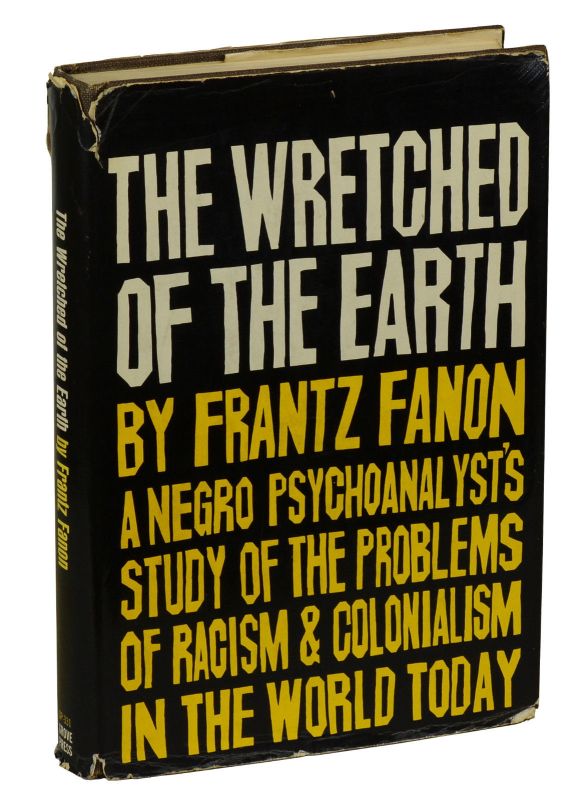
The Wretched The Wretched of the Earth is a brilliant analysis of the psychology of the colonized and their path to liberation. Bearing singular insight into the rage and frustration of colonized peoples, and the role of violence in effecting historical change, the book incisively attacks the twin perils of postindependence colonial politics: the disenfranchisement of the masses by the elites on the one hand, and intertribal and interfaith animosities on the other. Fanon’s analysis, a veritable handbook of social reorganization for leaders of emerging nations, has been reflected all too clearly in the corruption and violence that has plagued present-day Africa. The Wretched of the Earth has had a major impact on civil rights, anticolonialism, and black consciousness movements around the world.
500 Years of Indigenous Resistance
by Gord Hill
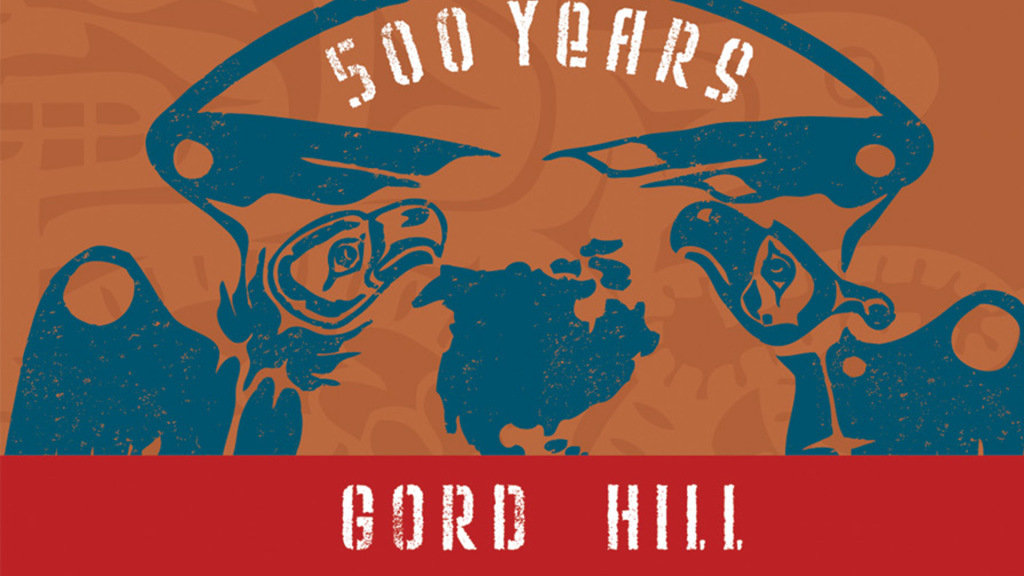
The history of the colonization of the Americas by Europeans is often portrayed as a mutually beneficial process, in which ”civilization” was brought to the Natives, who in return shared their land and cultures. A more critical history might present it as a genocide in which Indigenous peoples were helpless victims, overwhelmed and awed by European military power. In reality, neither of these views is correct.
500 Years of Indigenous Resistance is more than a history of European colonization of the Americas. In this slim volume, Gord Hill chronicles the resistance by Indigenous peoples, which limited and shaped the forms and extent of colonialism. This history encompasses North and South America, the development of nation-states, and the resurgence of Indigenous resistance in the post-WW2 era.
¡Ya Basta!: Ten Years of the Zapatista Uprising
by Subcomandante Insurgente Marcos (Author), Rafael Guillén Vicente (Author), Ziga Vodovnik (Editor), Noam Chomsky (Foreword), Naomi Klein (Foreword)

“The world has a new kind of hero, one who listens more than speaks, who preaches in riddles not in certainties, a leader who doesn’t show his face, who says his mask is really a mirror. And in the Zapatistas, we have not one dream of a revolution but a dreaming revolution.”—Naomi Klein
The most comprehensive collection of essays and communiqués by Subcomandante Marcos chronicles the written voice of the Zapatista movement and its struggle to open a space within the neoliberal, globalized landscape for the oppressed peoples of the world. Complete from their first public appearance in 1994 through their 10-year anniversary celebrations and period of restructuring in 2004.
“The Zapatista uprising in Chiapas was certainly one of the most dramatic and important instances in our time of a genuine grassroots movement against oppression. In this volume, the writings of Subcomandante Marcos give eloquent expression to this movement, revealing both its philo-sophical foundations and its tactical ingenuity. I believe his words and the statements of the Zapatistas can inspire a new generation of activists and let them understand that it is possible for ordinary people, without military power, without wealth, to challenge state power successfully on behalf of social justice. [This] fantastic collection of Marcos’ words conveys the spirit of the Zapatistas as no other book I know has done.”—Howard Zinn
“After over 500 years of conquest, the indigenous -people already know what the rest of us must learn about empires: that they exploit the many for the privileges of the few, that they ransack the cultures of antiquity, that they place a burden even on the mother countries. But in their actions and writings, the Zapatistas are inspiring a new generation to join the struggle for a better world. It’s our world too!”—Tom Hayden
A Dying Colonialism
by Frantz Fanon

A Dying Colonialism is Fanon’s incisive and illuminating account of how, during the Algerian Revolution, the people of Algeria changed centuries-old cultural patterns and embraced certain ancient cultural practices long derided by their colonialist oppressors as “primitive,” in order to destroy those oppressors. Fanon uses the fifth year of the Algerian Revolution as a point of departure for an explication of the inevitable dynamics of colonial oppression. This is a strong, lucid, and militant book; to read it is to understand why Fanon says that for the colonized, “having a gun is the only chance you still have of giving a meaning to your death.”
1491: New Revelations of the Americas Before Columbus
by Charles C Mann
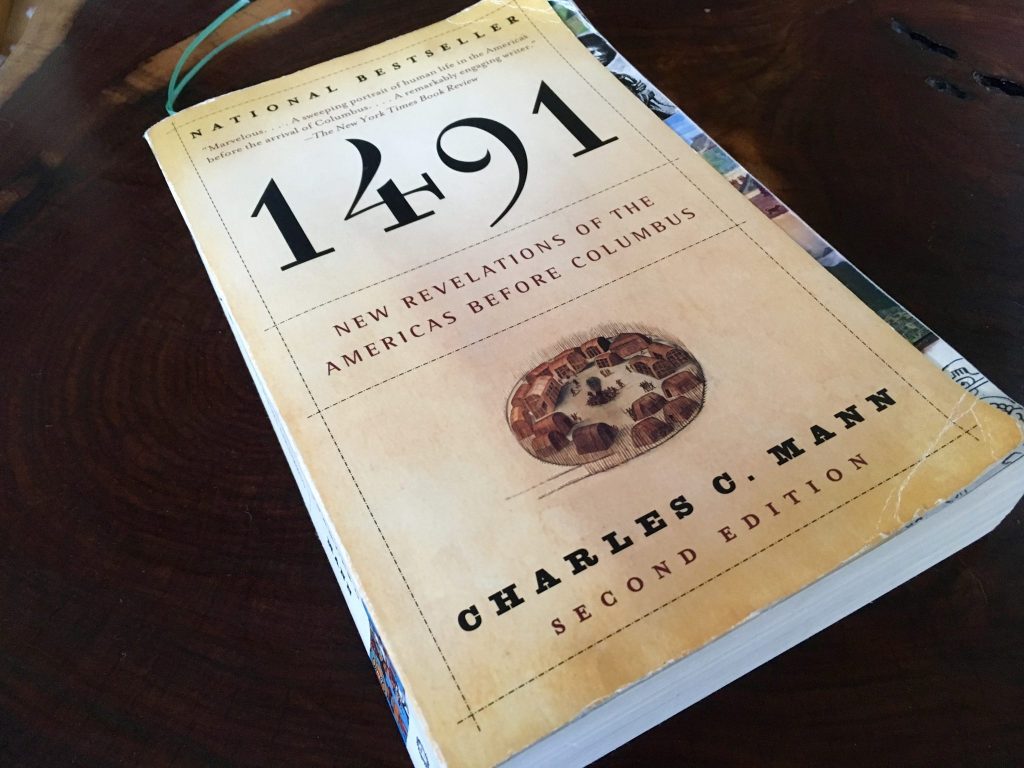
A groundbreaking study that radically alters our understanding of the Americas before the arrival of the Europeans in 1492.
Traditionally, Americans learned in school that the ancestors of the people who inhabited the Western Hemisphere at the time of Columbus’s landing had crossed the Bering Strait twelve thousand years ago; existed mainly in small, nomadic bands; and lived so lightly on the land that the Americas was, for all practical purposes, still a vast wilderness. But as Charles C. Mann now makes clear, archaeologists and anthropologists have spent the last thirty years proving these and many other long-held assumptions wrong.
In a book that startles and persuades, Mann reveals how a new generation of researchers equipped with novel scientific techniques came to previously unheard-of conclusions. Among them:
• In 1491 there were probably more people living in the Americas than in Europe.
• Certain cities–such as Tenochtitlán, the Aztec capital–were far greater in population than any contemporary European city. Furthermore, Tenochtitlán, unlike any capital in Europe at that time, had running water, beautiful botanical gardens, and immaculately clean streets.
• The earliest cities in the Western Hemisphere were thriving before the Egyptians built the great pyramids.
• Pre-Columbian Indians in Mexico developed corn by a breeding process so sophisticated that the journal Science recently described it as “man’s first, and perhaps the greatest, feat of genetic engineering.”
• Amazonian Indians learned how to farm the rain forest without destroying it–a process scientists are studying today in the hope of regaining this lost knowledge.
• Native Americans transformed their land so completely that Europeans arrived in a hemisphere already massively “landscaped” by human beings.
Mann sheds clarifying light on the methods used to arrive at these new visions of the pre-Columbian Americas and how they have affected our understanding of our history and our thinking about the environment. His book is an exciting and learned account of scientific inquiry and revelation.
Braiding Sweetgrass: Indigenous Wisdom, Scientific Knowledge and the Teachings of Plants
by Robin Wall Kimmerer

Drawing on her life as an indigenous scientist, and as a woman, Kimmerer shows how other living beings―asters and goldenrod, strawberries and squash, salamanders, algae, and sweetgrass―offer us gifts and lessons, even if we’ve forgotten how to hear their voices. In reflections that range from the creation of Turtle Island to the forces that threaten its flourishing today, she circles toward a central argument: that the awakening of ecological consciousness requires the acknowledgment and celebration of our reciprocal relationship with the rest of the living world. For only when we can hear the languages of other beings will we be capable of understanding the generosity of the earth, and learn to give our own gifts in return.
An Indigenous Peoples’ History of the United States
by Roxanne Dunbar-Ortiz
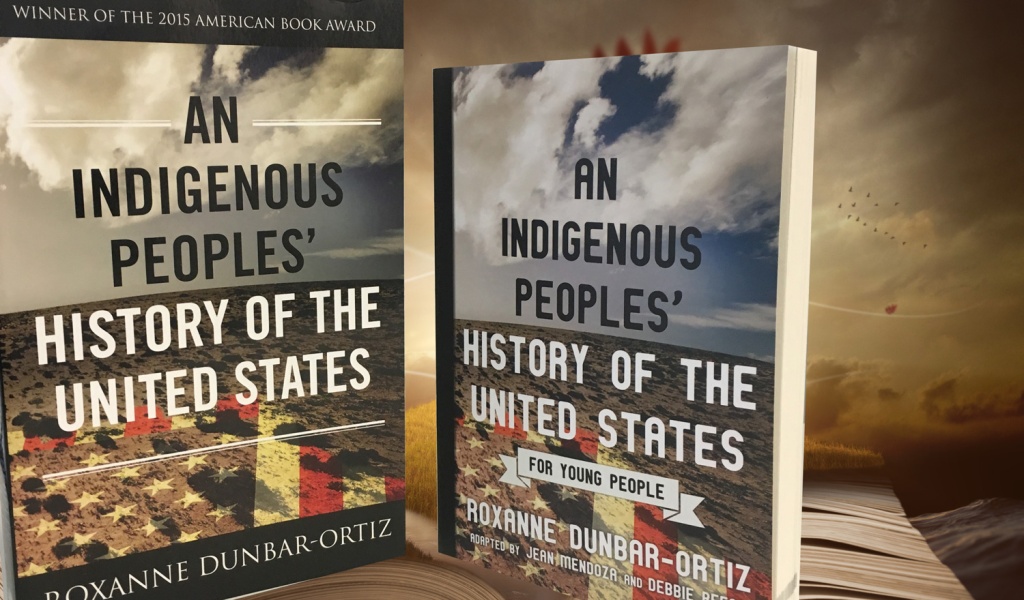
The first history of the United States told from the perspective of indigenous peoples
Today in the United States, there are more than five hundred federally recognized Indigenous nations comprising nearly three million people, descendants of the fifteen million Native people who once inhabited this land. The centuries-long genocidal program of the US settler-colonial regimen has largely been omitted from history. Now, for the first time, acclaimed historian and activist Roxanne Dunbar-Ortiz offers a history of the United States told from the perspective of Indigenous peoples and reveals how Native Americans, for centuries, actively resisted expansion of the US empire.
In An Indigenous Peoples’ History of the United States, Dunbar-Ortiz adroitly challenges the founding myth of the United States and shows how policy against the Indigenous peoples was colonialist and designed to seize the territories of the original inhabitants, displacing or eliminating them. And as Dunbar-Ortiz reveals, this policy was praised in popular culture, through writers like James Fenimore Cooper and Walt Whitman, and in the highest offices of government and the military. Shockingly, as the genocidal policy reached its zenith under President Andrew Jackson, its ruthlessness was best articulated by US Army general Thomas S. Jesup, who, in 1836, wrote of the Seminoles: “The country can be rid of them only by exterminating them.”
Spanning more than four hundred years, this classic bottom-up peoples’ history radically reframes US history and explodes the silences that have haunted our national narrative.
The Apocalypse of Settler Colonialism: The Roots of Slavery, White Supremacy, and Capitalism in 17th Century North America and the Caribbean
by Gerald Horne
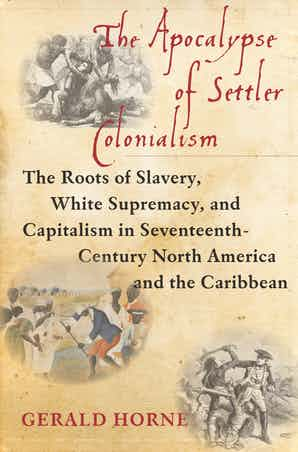
Virtually no part of the modern United States—the economy, education, constitutional law, religious institutions, sports, literature, economics, even protest movements—can be understood without first understanding the slavery and dispossession that laid its foundation. To that end, historian Gerald Horne digs deeply into Europe’s colonization of Africa and the New World, when, from Columbus’s arrival until the Civil War, some 13 million Africans and some 5 million Native Americans were forced to build and cultivate a society extolling “liberty and justice for all.” The seventeenth century was, according to Horne, an era when the roots of slavery, white supremacy, and capitalism became inextricably tangled into a complex history involving war and revolts in Europe, England’s conquest of the Scots and Irish, the development of formidable new weaponry able to ensure Europe’s colonial dominance, the rebel merchants of North America who created “these United States,” and the hordes of Europeans whose newfound opportunities in this “free” land amounted to “combat pay” for their efforts as “white” settlers.
Centering his book on the Eastern Seaboard of North America, the Caribbean, Africa, and what is now Great Britain, Horne provides a deeply researched, harrowing account of the apocalyptic loss and misery that likely has no parallel in human history. This is an essential book that will not allow history to be told by the victors. It is especially needed now, in the age of Trump. For it has never been more vital, Horne writes, “to shed light on the contemporary moment wherein it appears that these malevolent forces have received a new lease on life.”
Our History Is the Future: Standing Rock Versus the Dakota Access Pipeline, and the Long Tradition of Indigenous Resistance
by Nick Estes
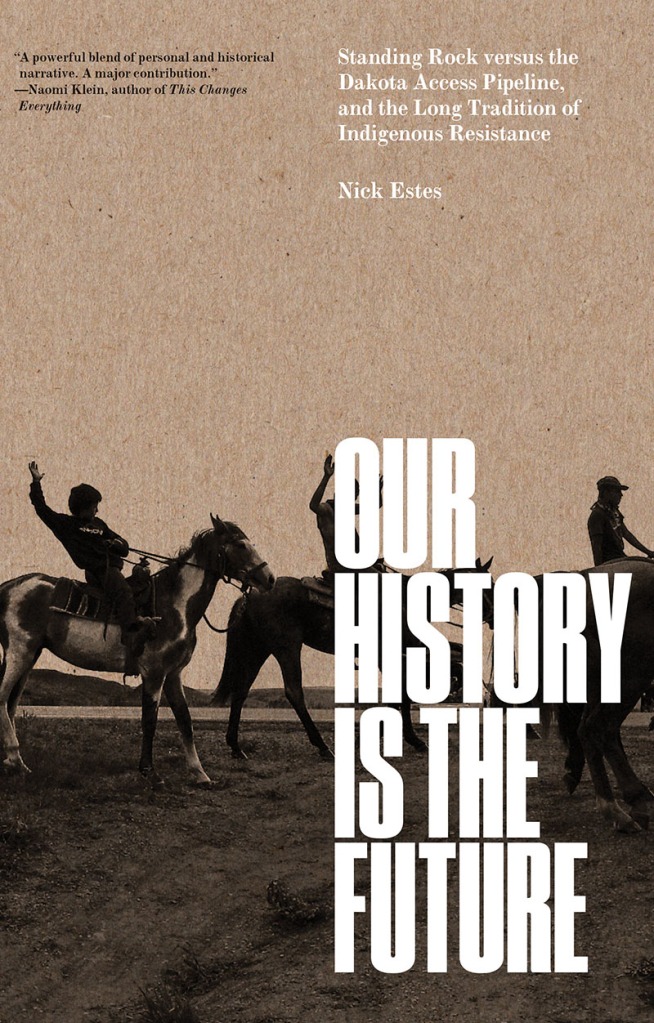
How two centuries of Indigenous resistance created the movement proclaiming “Water is life”
In 2016, a small protest encampment at the Standing Rock Reservation in North Dakota, initially established to block construction of the Dakota Access oil pipeline, grew to be the largest Indigenous protest movement in the twenty-first century. Water Protectors knew this battle for native sovereignty had already been fought many times before, and that, even after the encampment was gone, their anticolonial struggle would continue. In Our History Is the Future, Nick Estes traces traditions of Indigenous resistance that led to the #NoDAPL movement. Our History Is the Future is at once a work of history, a manifesto, and an intergenerational story of resistance.
Open Veins of Latin America: Five Centuries of the Pillage of a Continent
by Eduardo Galeano

Since its U.S. debut a quarter-century ago, this brilliant text has set a new standard for historical scholarship of Latin America. It is also an outstanding political economy, a social and cultural narrative of the highest quality, and perhaps the finest description of primitive capital accumulation since Marx.
Rather than chronology, geography, or political successions, Eduardo Galeano has organized the various facets of Latin American history according to the patterns of five centuries of exploitation. Thus he is concerned with gold and silver, cacao and cotton, rubber and coffee, fruit, hides and wool, petroleum, iron, nickel, manganese, copper, aluminum ore, nitrates, and tin. These are the veins which he traces through the body of the entire continent, up to the Rio Grande and throughout the Caribbean, and all the way to their open ends where they empty into the coffers of wealth in the United States and Europe.
Weaving fact and imagery into a rich tapestry, Galeano fuses scientific analysis with the passions of a plundered and suffering people. An immense gathering of materials is framed with a vigorous style that never falters in its command of themes. All readers interested in great historical, economic, political, and social writing will find a singular analytical achievement, and an overwhelming narrative that makes history speak, unforgettably.
The Other Slavery: The Uncovered Story of Indian Enslavement in America
by Andrés Reséndez
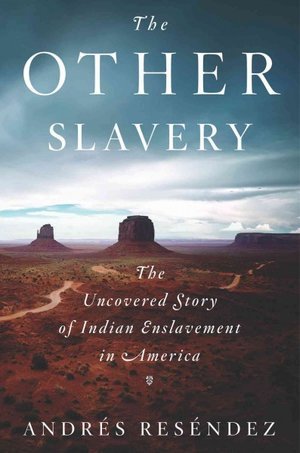
Since the time of Columbus, Indian slavery was illegal in much of the American continent. Yet, as Andrés Reséndez illuminates in his myth-shattering The Other Slavery, it was practiced for centuries as an open secret. There was no abolitionist movement to protect the tens of thousands of Natives who were kidnapped and enslaved by the conquistadors. Reséndez builds the incisive case that it was mass slavery—more than epidemics—that decimated Indian populations across North America. Through riveting new evidence, including testimonies of courageous priests, rapacious merchants, and Indian captives, The Other Slavery reveals nothing less than a key missing piece of American history. For over two centuries we have fought over, abolished, and tried to come to grips with African American slavery. It is time for the West to confront an entirely separate, equally devastating enslavement we have long failed truly to see.
The Anti-Capitalist Resistance Comic Book: From the WTO to the G20
by Gord Hill
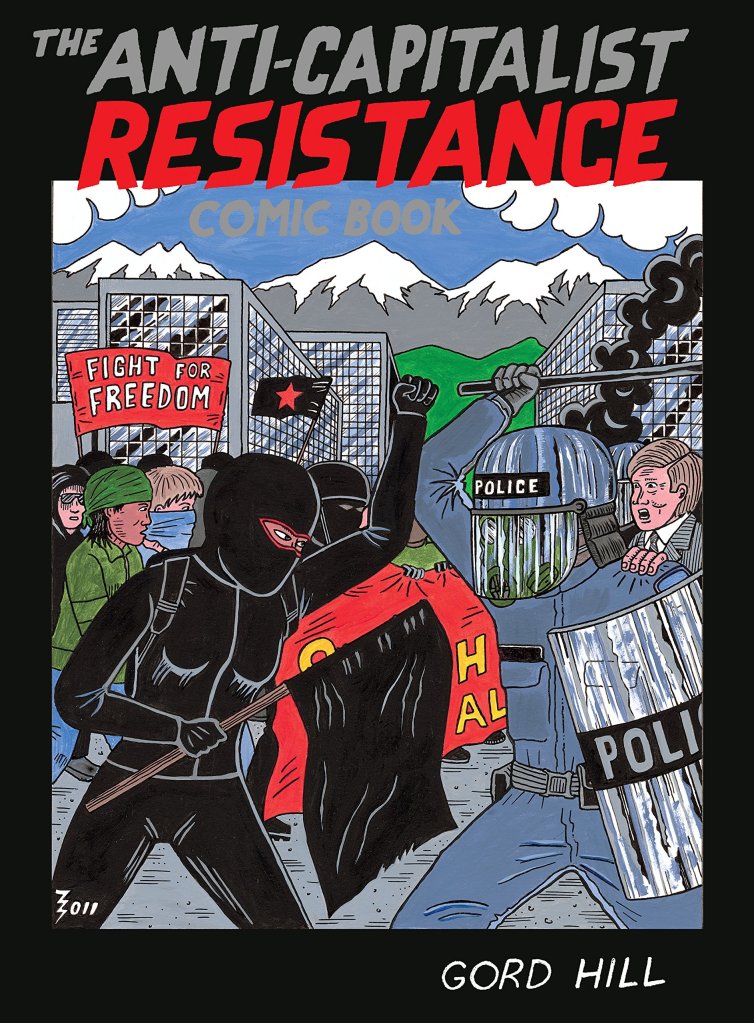
In recent years the world has borne witness to numerous confrontations, many of them violent, between protesters and authorities at pivotal gatherings of the world’s political and economic leaders. While police and the media are quick to paint participants as anarchistic thugs, accurate accounts of their ubsequent treatment at the hands of authorities often go untold—as well as the myriad stories of corporate and government corruption, greed, exploitation, and abuse of power that inspired such protests in the first place. In this startling, politically astute graphic novel, Gord Hill (The 500 Years of Resistance Comic Book) documents the history of capitalism as well as anti-capitalist and anti-globalization movements around the world, from the 1999 “Battle of Seattle” against the World Trade Organization to the Toronto G20 summit in 2010. The dramatic accounts trace the global origins of public protests against those in power, then depict recent events based on eyewitness testimony; they go far to contradict the myths of violence perpetrated by authorities, and instead paint a vivid and historically accurate picture of activists who bring the crimes of governments and multinationals to the world’s attention.
As the “Occupy” movements around the world unfold, The Anti-Capitalist Resistance Comic Book is a deft, eye-opening look at the new class warfare, and those brave enough to wage the battle.
The Antifa Comic Book: 100 Years of Fascism and Antifa Movements
by Gord Hill (Author), Mark Bray (Foreword)

The shocking images of neo-Nazis marching in Charlottesville, North Carolina in the summer of 2017 linger in the mind, but so do those of the passionate protestors who risked their lives to do the right thing. In this stirring graphic non-fiction book by the acclaimed author of The 500 Years of Resistance Comic Book, Gord Hill looks at the history of fascism over the last 100 years, and the concurrent antifa movements that work fastidiously to topple it.
Fascism is a relatively new political ideology and movement, yet in its short history some of the greatest atrocities against humanity have been carried out in its name. Its poisonous roots have taken hold in every region of the world, from its beginnings in post-World War I Italy, through Nazi Germany, Franco’s Spain, and the KKK in America. And today, emboldened by the American president, fascism is alive and well again. At the same time, antifa activists have proven, through history and again today, that the spirit of resistance is alive and well, and necessary.
In The Antifa Comic Book, Gord Hill documents these powerful moments of conflict and confrontation with a perceptive eye and a powerful sense of resolve.
Custer Died for Your Sins: An Indian Manifesto
by Jr. Vine Deloria
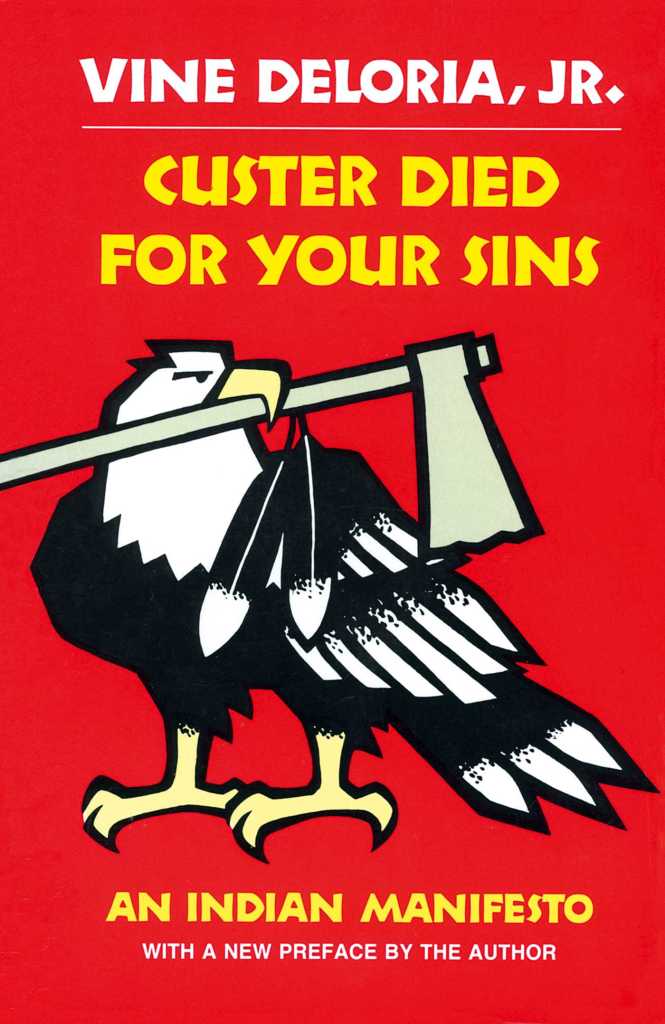
Standing Rock Sioux activist, professor, and attorney Vine Deloria, Jr., shares his thoughts about US race relations, federal bureaucracies, Christian churches, and social scientists in a collection of eleven eye-opening essays infused with humor. This “manifesto” provides valuable insights on American Indian history, Native American culture, and context for minority protest movements mobilizing across the country throughout the 1960s and early 1970s. Originally published in 1969, this book remains a timeless classic and is one of the most significant nonfiction works written by a Native American.
Militant Anti-FascismA Hundred Years of Resistance
M. Testa (Author)

Fascism is not a thing of the past. In this era of crisis and austerity, it is growing even stronger. The question is: How do we stop it?
According to M. Testa, the fight against it must be aggressive and unrelenting. Using a mixture of orthodox history, eyewitness accounts, and unflinching analysis, he makes the case for a resolutely militant anti-fascism, one that gives no quarter and tolerates no excuses. Unlike other partisan accounts of contemporary battles against fascism and ultra-nationalism, Militant Anti-Fascism takes us from proto-fascists in nineteenth-century Austria to modern-day street-fights in London, providing a broad context for its arguments and looking at numerous countries over a longer period of time. The result is both a serious historical study and a story of victory and struggle, past and present, designed to inspire and energize militants.
Lay aside, as M. Testa does, your faith in liberal, legislative, and state-approved approaches to today’s fascist threat. Start by reading this provocative and unapologetic overview of militant anti-fascism and the strategies that have successfully confronted the far right when it has reappeared in its many guises.
Indians in Unexpected Places
by Philip J. Deloria
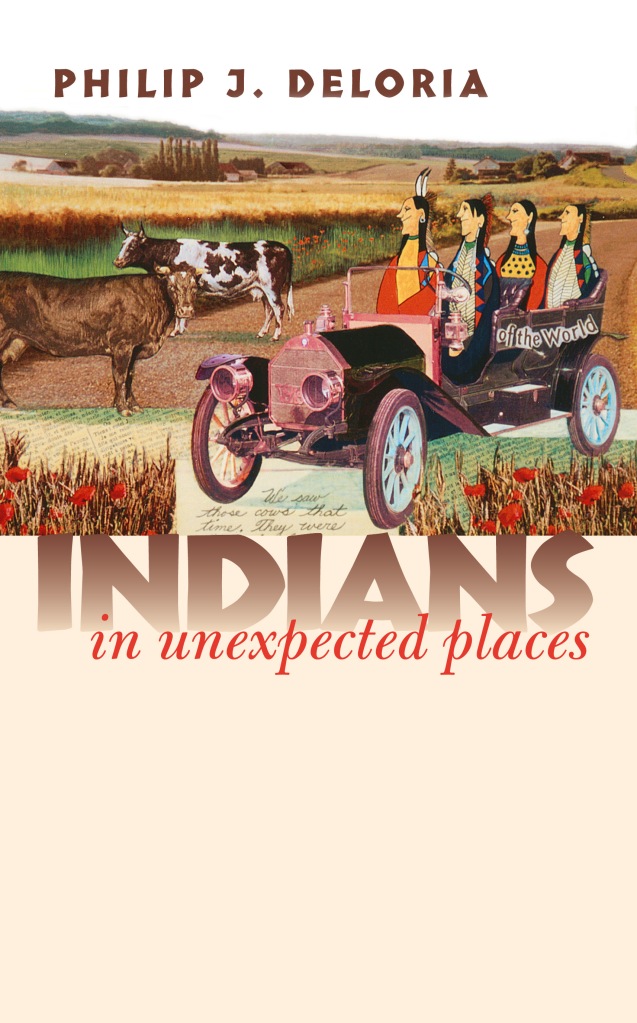
Despite the passage of time, our vision of Native Americans remains locked up within powerful stereotypes. That’s why some images of Indians can be so unexpected and disorienting: What is Geronimo doing sitting in a Cadillac? Why is an Indian woman in beaded buckskin sitting under a salon hairdryer? Such images startle and challenge our outdated visions, even as the latter continue to dominate relations between Native and non-Native Americans.
Talkin’ Up to the White Woman: Indigenous Women and Feminism
by Aileen Moreton-Robinson
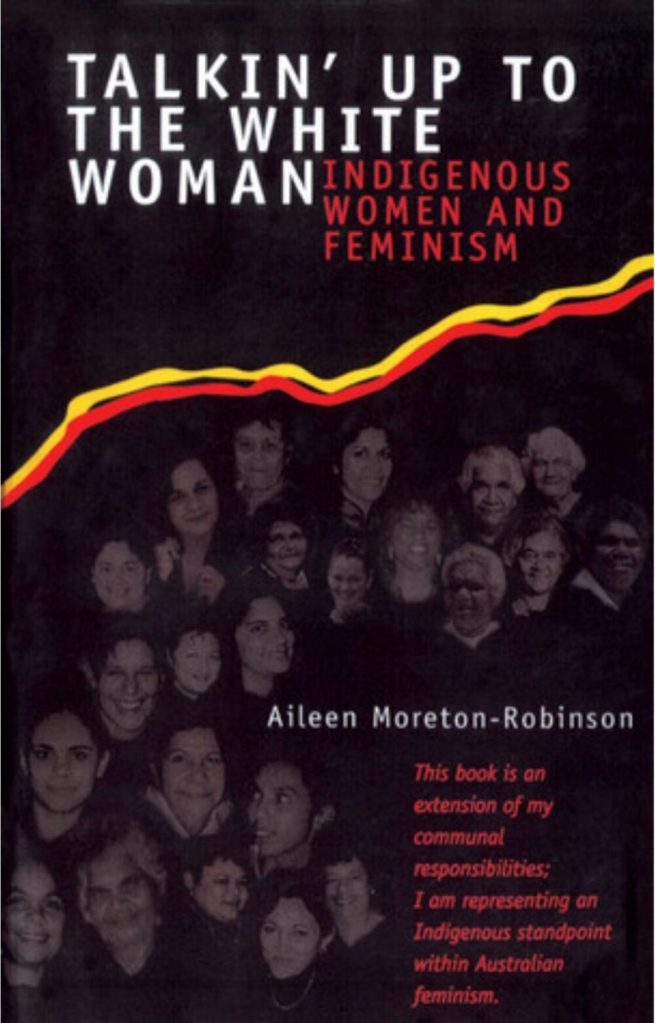
Revealing the invisible position of power and privilege in feminist practice, this accessible and provocative analysis elucidates the whiteness of Australian feminism. A pioneering work, it will overturn complacent notions of a mutual sisterhood and the common good.
Everything You Know about Indians Is Wrong
by Paul Chaat Smith

In this sweeping work of memoir and commentary, leading cultural critic Paul Chaat Smith illustrates with dry wit and brutal honesty the contradictions of life in “the Indian business.”
Raised in suburban Maryland and Oklahoma, Smith dove head first into the political radicalism of the 1970s, working with the American Indian Movement until it dissolved into dysfunction and infighting. Afterward he lived in New York, the city of choice for political exiles, and eventually arrived in Washington, D.C., at the newly minted National Museum of the American Indian (“a bad idea whose time has come”) as a curator. In his journey from fighting activist to federal employee, Smith tells us he has discovered at least two things: there is no one true representation of the American Indian experience, and even the best of intentions sometimes ends in catastrophe. Everything You Know about Indians Is Wrong is a highly entertaining and, at times, searing critique of the deeply disputed role of American Indians in the United States. In “A Place Called Irony,” Smith whizzes through his early life, showing us the ironic pop culture signposts that marked this Native American’s coming of age in suburbia: “We would order Chinese food and slap a favorite video into the machine—the Grammy Awards or a Reagan press conference—and argue about Cyndi Lauper or who should coach the Knicks.” In “Lost in Translation,” Smith explores why American Indians are so often misunderstood and misrepresented in today’s media: “We’re lousy television.” In “Every Picture Tells a Story,” Smith remembers his Comanche grandfather as he muses on the images of American Indians as “a half-remembered presence, both comforting and dangerous, lurking just below the surface.”
Smith walks this tightrope between comforting and dangerous, offering unrepentant skepticism and, ultimately, empathy. “This book is called Everything You Know about Indians Is Wrong, but it’s a book title, folks, not to be taken literally. Of course I don’t mean everything, just most things. And ‘you’ really means we, as in all of us.”
Partisanas: Women in the Armed Resistance to Fascism and German Occupation (1936-1945)
by Ingrid Strobl

Common perception of women in wartime relegates them to the sidelines of history—working in munitions factories or waiting for their men to return. The truth is that much of the resistance to fascism should be chalked up to the people about whom official accounts having nothing to say. Partisanas excavates the history of women who planted bombs, shouldered guns, and were among the most active participants in the European Resistance.
American Holocaust: The Conquest of the New World
by David E. Stannard
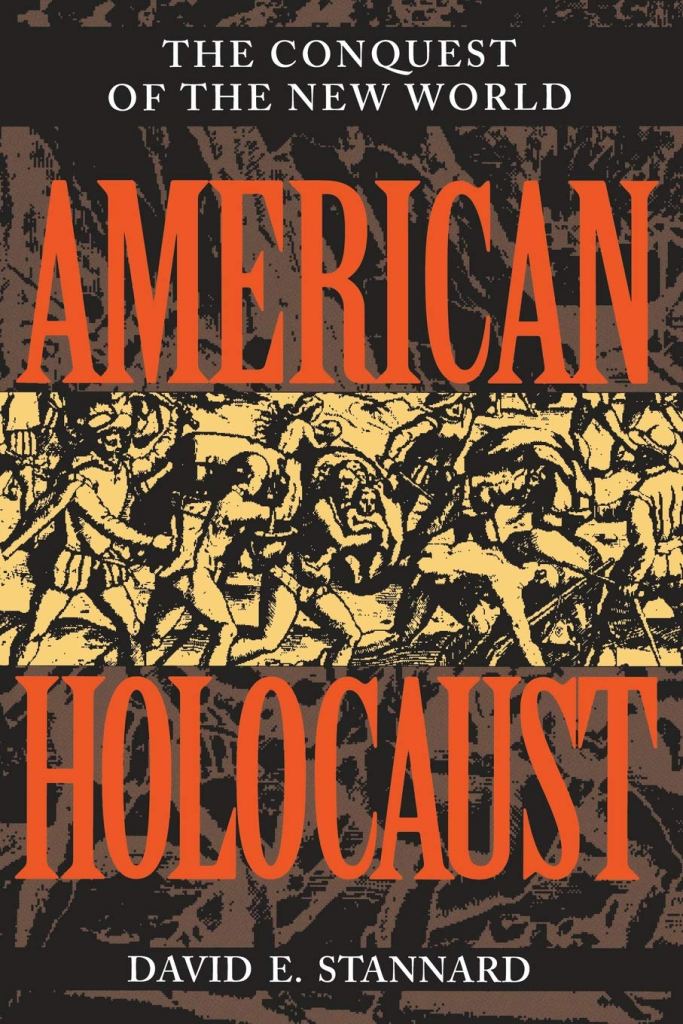
For four hundred years from the first Spanish assaults against the Arawak people of Hispaniola in the 1490s to the U.S. Army’s massacre of Sioux Indians at Wounded Knee in the 1890s the indigenous inhabitants of North and South America endured an unending firestorm of violence. During that time the native population of the Western Hemisphere declined by as many as 100 million people. Indeed, as historian David E. Stannard argues in this stunning new book, the European and white American destruction of the native peoples of the Americas was the most massive act of genocide in the history of the world.
Stannard begins with a portrait of the enormous richness and diversity of life in the Americas prior to Columbus’s fateful voyage in 1492. He then follows the path of genocide from the Indies to Mexico and Central and South America, then north to Florida, Virginia, and New England, and finally out across the Great Plains and Southwest to California and the North Pacific Coast. Stannard reveals that wherever Europeans or white Americans went, the native people were caught between imported plagues and barbarous atrocities, typically resulting in the annihilation of 95 percent of their populations. What kind of people, he asks, do such horrendous things to others? His highly provocative answer: Christians. Digging deeply into ancient European and Christian attitudes toward sex, race, and war, he finds the cultural ground well prepared by the end of the Middle Ages for the centuries long genocide campaign that Europeans and their descendants launched and in places continue to wage against the New World’s original inhabitants. Advancing a thesis that is sure to create much controversy, Stannard contends that the perpetrators of the American Holocaust drew on the same ideological wellspring as did the later architects of the Nazi Holocaust.
Walking the Clouds: An Anthology of Indigenous Science Fiction
by Grace L. Dillon (Editor)
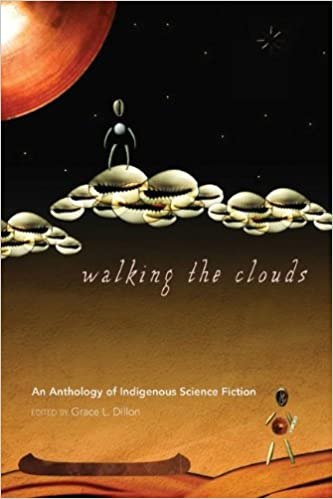
In this first-ever anthology of Indigenous science fiction Grace Dillon collects some of the finest examples of the craft with contributions by Native American, First Nations, Aboriginal Australian, and New Zealand Maori authors. The collection includes seminal authors such as Gerald Vizenor, historically important contributions often categorized as “magical realism” by authors like Leslie Marmon Silko and Sherman Alexie, and authors more recognizable to science fiction fans like William Sanders and Stephen Graham Jones. Dillon’s engaging introduction situates the pieces in the larger context of science fiction and its conventions.
The White Possessive: Property, Power, and Indigenous Sovereignty
by Aileen Moreton-Robinson

The White Possessive explores the links between race, sovereignty, and possession through themes of property: owning property, being property, and becoming propertyless. Focusing on the Australian Aboriginal context, Aileen Moreton-Robinson questions current race theory in the first world and its preoccupation with foregrounding slavery and migration. The nation, she argues, is socially and culturally constructed as a white possession.
Moreton-Robinson reveals how the core values of Australian national identity continue to have their roots in Britishness and colonization, built on the disavowal of Indigenous sovereignty. Whiteness studies literature is central to Moreton-Robinson’s reasoning, and she shows how blackness works as a white epistemological tool that bolsters the social production of whiteness—displacing Indigenous sovereignties and rendering them invisible in a civil rights discourse, thereby sidestepping thorny issues of settler colonialism.
Throughout this critical examination Moreton-Robinson proposes a bold new agenda for critical Indigenous studies, one that involves deeper analysis of how the prerogatives of white possession function within the role of disciplines.
Lakota Woman Reprint Edition
by Mary Brave Bird
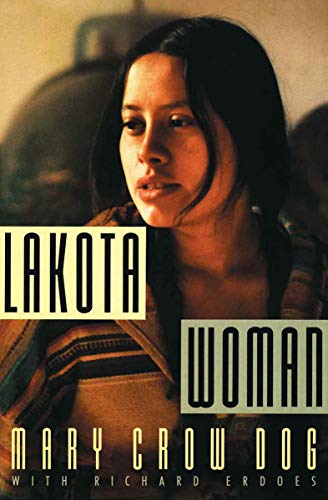
Mary Brave Bird grew up fatherless in a one-room cabin, without running water or electricity, on the Rosebud Indian Reservation in South Dakota. Rebelling against the aimless drinking, punishing missionary school, narrow strictures for women, and violence and hopeless of reservation life, she joined the new movement of tribal pride sweeping Native American communities in the sixties and seventies. Mary eventually married Leonard Crow Dog, the American Indian Movement’s chief medicine man, who revived the sacred but outlawed Ghost Dance.
Originally published in 1990, Lakota Woman was a national best seller and winner of the American Book Award. It is a unique document, unparalleled in American Indian literature, a story of death, of determination against all odds, of the cruelties perpetuated against American Indians, and of the Native American struggle for rights. Working with Richard Erdoes, one of the twentieth century’s leading writers on Native American affairs, Brave Bird recounts her difficult upbringing and the path of her fascinating life.
I Am Woman: A Native Perspective on Sociology and Feminism
by Lee Maracle
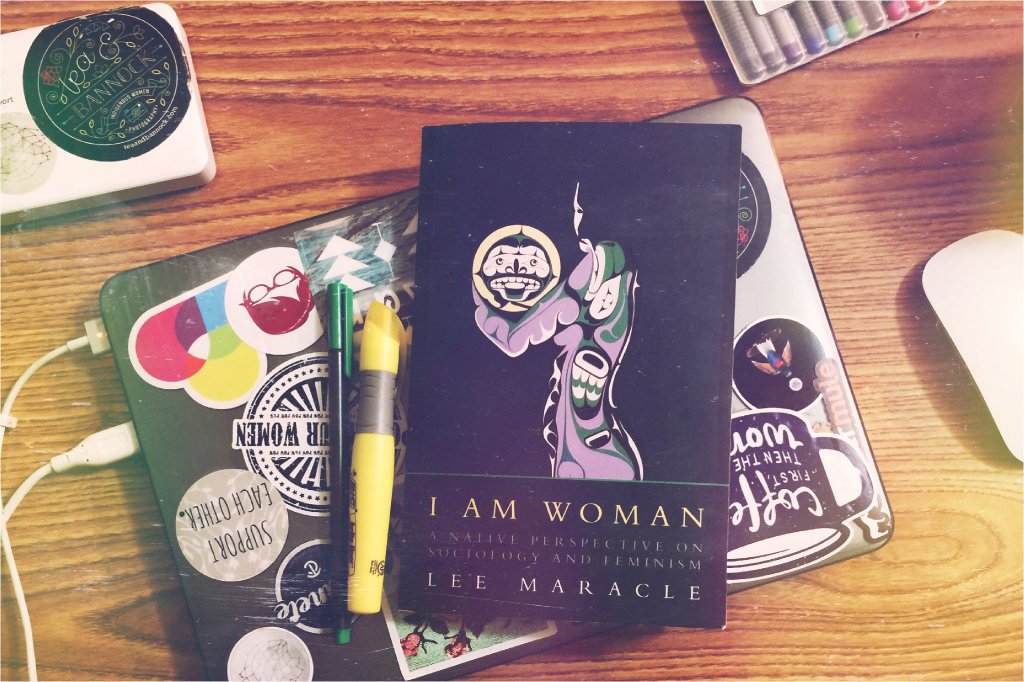
I Am Woman represents my personal struggle with womanhood, culture, traditional spiritual beliefs and political sovereignty, written during a time when that struggle was not over. My original intention was to empower Native women to take to heart their own personal struggle for Native feminist being. The changes made in this second edition of the text do not alter my original intention. It remains my attempt to present a Native woman’s sociological perspective on the impacts of colonialism on us, as women, and on my self personally.
The Colonizer and the Colonized
by Albert Memmi (Author), Jean-Paul Sartre (Introduction), Howard Greenfeld (Translator)

Written in 1956 when Morocco and Tunisia gained independence from France and soon after the Algerian war had started, this book describes the inescapable bonds between colonizer and colonized. Born in Tunis, Memmi is one of the colonized, but as a Jew, he identified culturally with the colonizer. He moved to France in 1956 and draws on his experience to analyze vividly how colonizer and colonized are mutually dependent, and ultimately both victims of colonialism.
Discourse on Colonialism
by Aimé Césaire (Author), Joan Pinkham (Translator)
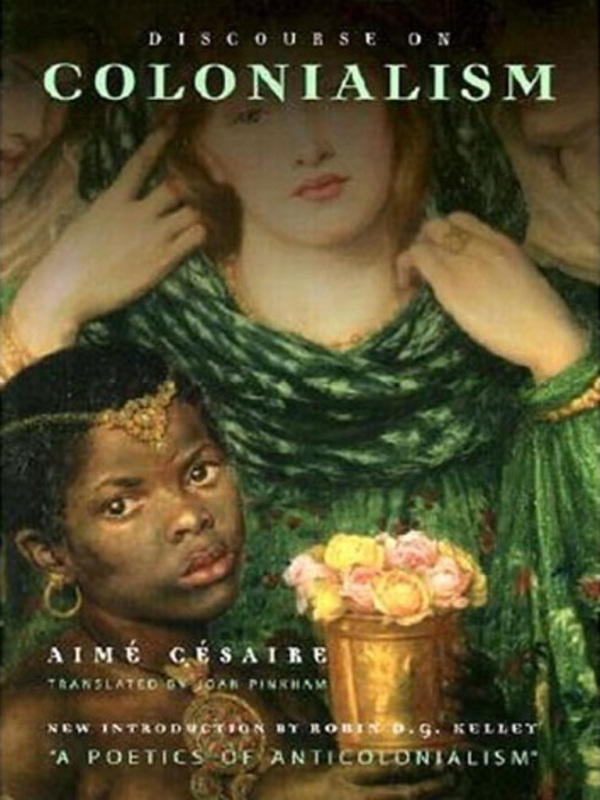
This classic work, first published in France in 1955, profoundly influenced the generation of scholars and activists at the forefront of liberation struggles in Africa, Latin America, and the Caribbean. Nearly twenty years later, when published for the first time in English, Discourse on Colonialism inspired a new generation engaged in the Civil Rights, Black Power, and anti-war movements and has sold more than 75,000 copies to date.
Aimé Césaire eloquently describes the brutal impact of capitalism and
colonialism on both the colonizer and colonized, exposing the contradictions and hypocrisy implicit in western notions of “progress” and “civilization” upon encountering the “savage,” “uncultured,” or “primitive.” Here, Césaire reaffirms African values, identity, and culture, and their relevance, reminding us that “the relationship between consciousness and reality are extremely complex. . . . It is equally necessary to decolonize our minds, our inner life, at the same time that we decolonize society.”
The Inconvenient Indian: A Curious Account of Native People in North America
by Thomas King
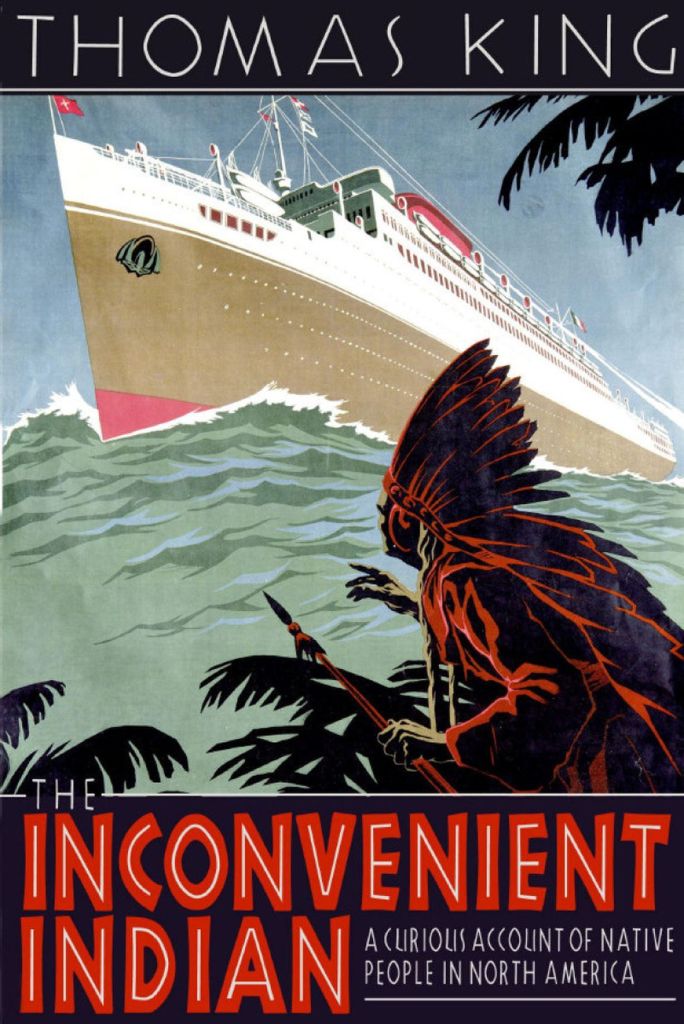
In The Inconvenient Indian, Thomas King offers a deeply knowing, darkly funny, unabashedly opinionated, and utterly unconventional account of Indian–White relations in North America since initial contact. Ranging freely across the centuries and the Canada–U.S. border, King debunks fabricated stories of Indian savagery and White heroism, takes an oblique look at Indians (and cowboys) in film and popular culture, wrestles with the history of Native American resistance and his own experiences as a Native rights activist, and articulates a profound, revolutionary understanding of the cumulative effects of ever-shifting laws and treaties on Native peoples and lands.
Suffused with wit, anger, perception, and wisdom, The Inconvenient Indian is at once an engaging chronicle and a devastating subversion of history, insightfully distilling what it means to be “Indian” in North America. It is a critical and personal meditation that sees Native American history not as a straight line but rather as a circle in which the same absurd, tragic dynamics are played out over and over again. At the heart of the dysfunctional relationship between Indians and Whites, King writes, is land: “The issue has always been land.” With that insight, the history inflicted on the indigenous peoples of North America—broken treaties, forced removals, genocidal violence, and racist stereotypes—sharpens into focus. Both timeless and timely, The Inconvenient Indian ultimately rejects the pessimism and cynicism with which Natives and Whites regard one another to chart a new and just way forward for Indians and non-Indians alike.
Stolen Continents: 500 Years of Conquest and Resistance in the Americas
by Ronald Wright
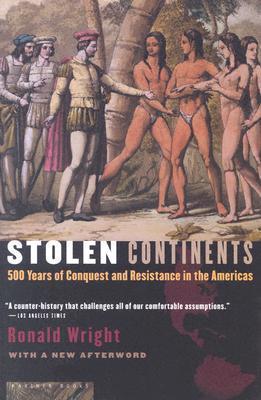
Powerful and passionate, Stolen Continents is a history of the Americas unlike any other. This incisive single-volume report tells the stories of the conquest and survival of five great American cultures — Aztec, Maya, Inca, Cherokee, and Iroquois. Through their eloquent words, we relive their strange, tragic experiences — including, in a new epilogue, incidents that bring us up to the twenty-first century.
Pangayaw and Decolonizing Resistance: Anarchism in the Philippines
by Bas Umali

The legacy of anarchist ideas in the Philippines was first brought to the attention of a global audience by Benedict Anderson’s book Under Three Flags: Anarchism and the Anti-Colonial Imagination. Activist-author Bas Umali proves with stunning evidence that these ideas are still alive in a country that he would like to see replaced by an “archepelagic confederation.”
Pangayaw and Decolonizing Resistance: Anarchism in the Philippines is the first-ever book specifically about anarchism in the Phillipines. Pangayaw refers to indigenous ways of maritime warfare. Bas Umali expertly ties traditional forms of communal life in the archipelago that makes up the Philippine state together with modern-day expressions of antiauthoritarian politics. Umali’s essays are deliciously provocative, not just for apologists of the current system, but also for radicals in the Global North who often forget that their political models do not necessarily fit the realities of postcolonial countries.
In weaving together independent research and experiences from grassroots organizing, Umali sketches a way for resistance in the Global South that does not rely on Marxist determinism and Maoist people’s armies but the self-empowerment of the masses. His book addresses the crucial questions of liberation: who are the agents and what are the means?
More than a sterile case study, Pangayaw and Decolonizing Resistance is the start of a new paradigm and a must-read for those interested in decolonization, anarchism, and social movements of the global south.
Black Skin, White Masks
by Frantz Fanon

A major influence on civil rights, anti-colonial, and black consciousness movements around the world, Black Skin, White Masks is the unsurpassed study of the black psyche in a white world. Hailed for its scientific analysis and poetic grace when it was first published in 1952, the book remains a vital force today from one of the most important theorists of revolutionary struggle, colonialism, and racial difference in history.
Government
by B. Traven
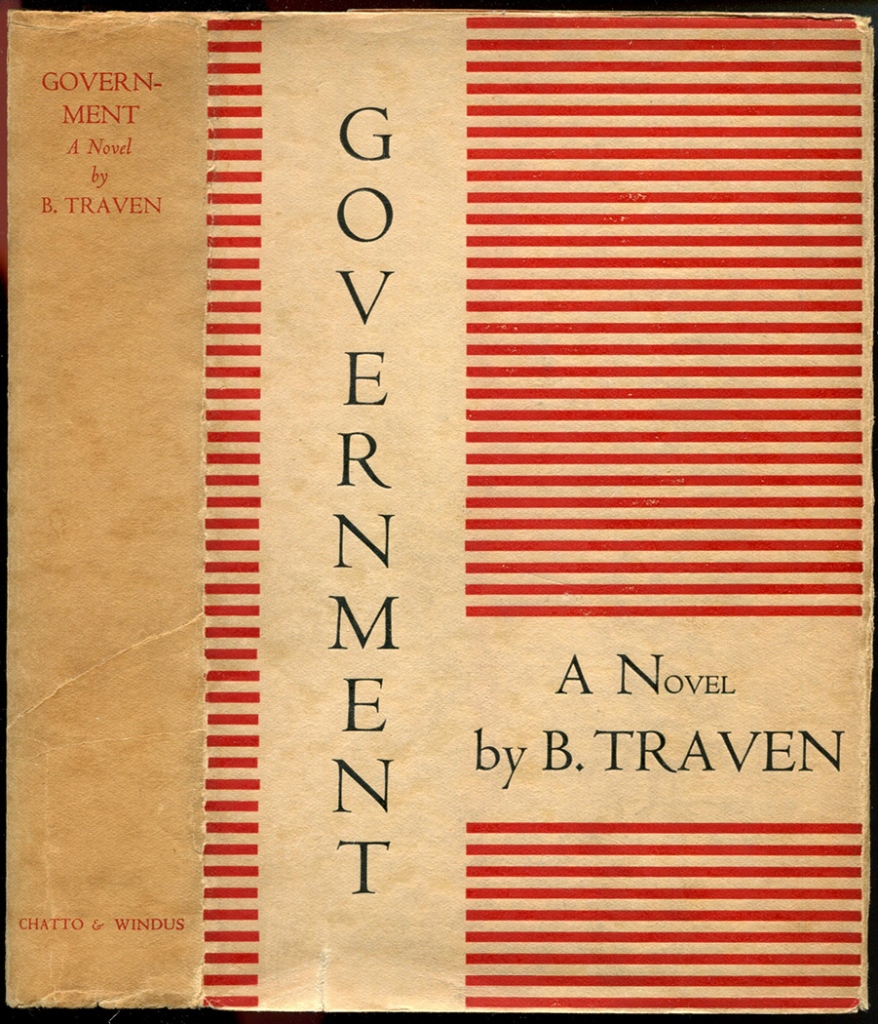
In the 1930s B. Traven wrote an epic of the birth of the Mexican revolution in what have become known as the “Jungle Novels.” Government is the first of the six novels that comprise the series. Depicting the political corruption that infected even the smallest villages in Mexico, the novel tells the story of Don Gabriel, a minor government functionary who has a virtual license to steal from the Indian village where he is secretary―except that the Indians have nothing to steal. By chance he finds an opportunity in the labor agent business, shanghaiing luckless Indians into debt-slavery so that he can ship them off to work in the great mahogany plantations owned by foreign capital. The novel reaches a moving climax in a clash of cultures between the simple dignity of the illiterate Indians and the cynicism and corruption of the politicians and petty bureaucrats.
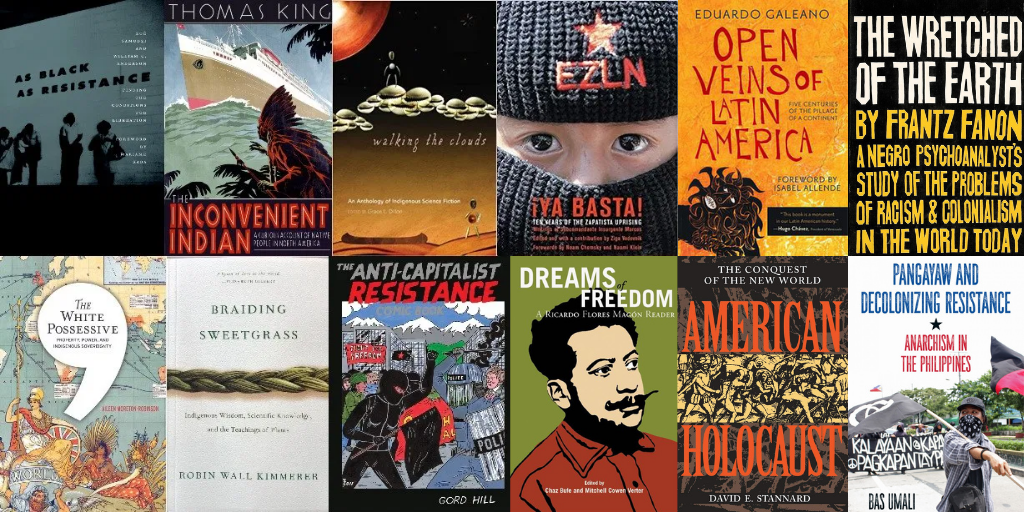
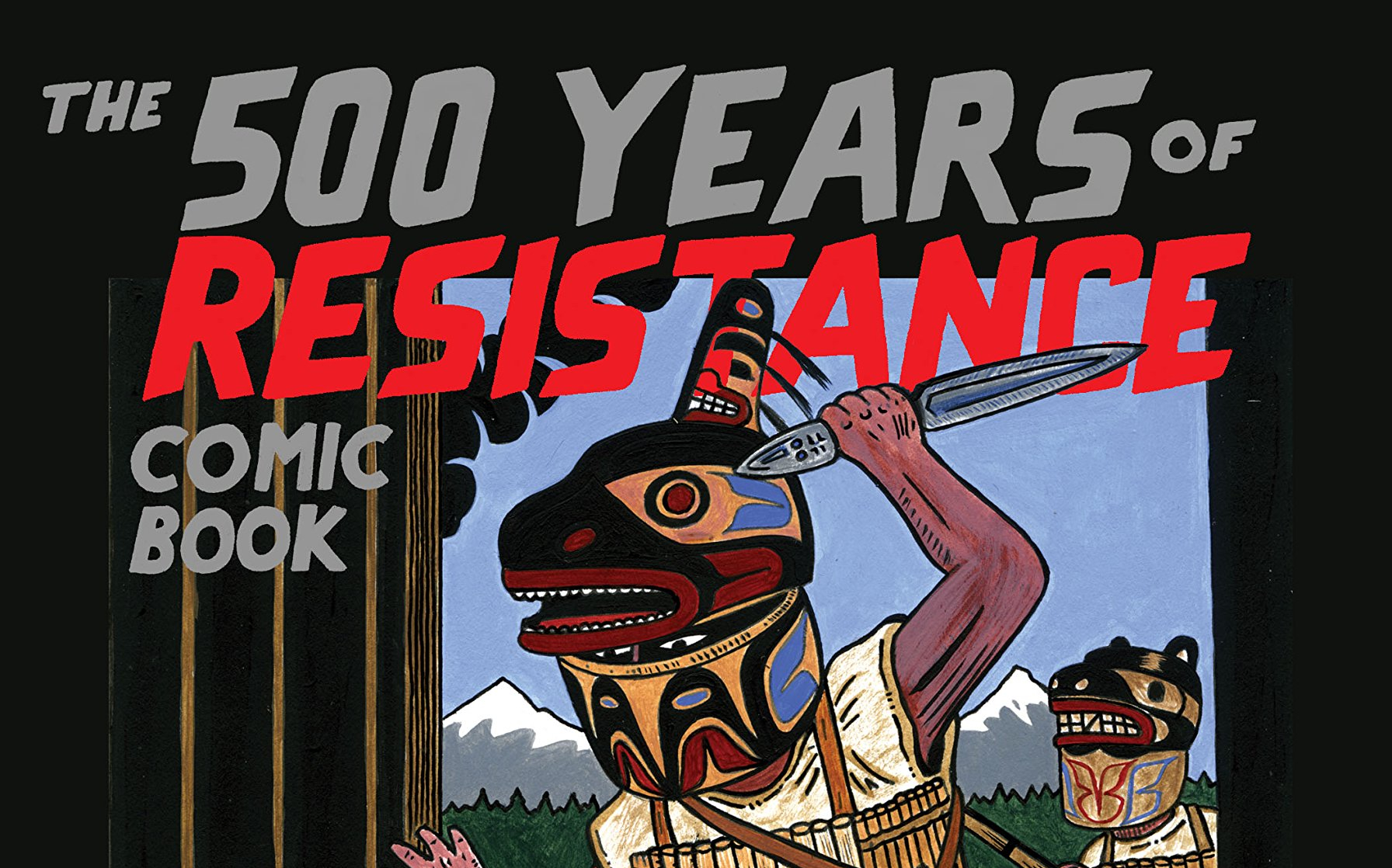
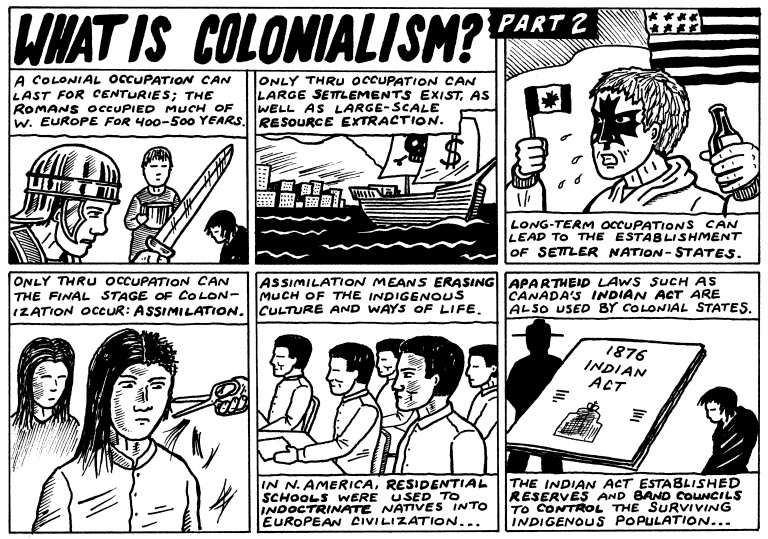
2 thoughts on “Recommended Readings”
Comments are closed.